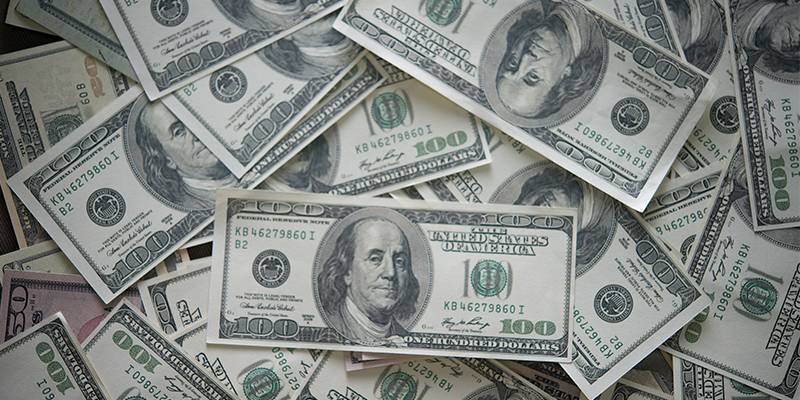Future of Hong Kong dollar’s peg to the US dollar

Recently, the National People’s Congress of China (NPC) held its Third Plenary session from May 22 to 28 in Beijing. At the same time, the Chinese People’s Political Consultative Conference (CPPCC) was also conducted as part of the annual Two Sessions. China’s NPC, in the above-mentioned meeting, endorsed a resolution for a New National Security Law for Hong Kong; outlawing acts of secession, subversion, terrorism and interference by foreign or external forces in the city’s affairs. The resolution was subsequently passed by the legislators on May 28. The next step for the NPC Standing Committee is to draft the bill, which would then be presented in the body’s bi-monthly meeting. On the global front, here’s what happened. Hours before passing the resolution in the legislature, United States Secretary of State, Mike Pompeo announced that the United States no longer considered “Hong Kong to be highly autonomous from mainland China”.
As a follow up to that, US President Donald Trump announced that he plans to begin “stripping Hong Kong of its special trading status and economic privileges that differentiate it from Beijing”. With such bold statements being made, Hong Kong’s future as a financial hub seems to be in a precarious situation. Caught in the middle amid escalating tensions between the US and China, there are several questions that need to be addressed in order to determine what lies in store in the future for Hong Kong. One of the pertinent issues that has been brought to the fore is the Hong Kong dollar’s 36-year-old peg to the US dollar.
In 1983, Hong Kong underwent a banking and fiscal crisis when the Hong Kong dollar exchange rate with the US dollar was recorded at HK$ 9.6 to US$ 1 — the lowest ever. This was observed on September 24, 1983, which was later known as the Black Saturday. This was a result of a decade’s negotiations between the British and mainland Chinese governments related to the hand over of Hong Kong. During this period, Hong Kong had didn’t have a fixed exchange rate and the price kept floating. Due to this massive fluctuation in the local currency, a solution in the form of Linked Exchange Rate System (LERS) was introduced on October 17, 1983.
YC Jao’s recommendation to implement the peg at a certain value through a currency board system saw Hong Kong’s then financial secretary, John Bremridge set the value of the peg to HK$ 7.8 to US$ 1. Since then, the peg has remained unchained and the trading has been done in the range of HK$ 7.75 to HK$ 7.85. To ensure the smooth functioning of the currency board system, the Hong Kong Monetary Authority (HKMA) was established in 1993. As a de-facto central bank, the HKMA operates as a cohesive financial system that aims at stabilising the Hong Kong currency and the banking system. To its credit, the HKMA has ever since defended the peg, even at turbulent times such as the 1997 Asian financial crisis.
As per records, the government spent HK$ 120 billion (approx. US$ 15 billion) in 1998 to purchase stocks to stop the currency speculators from causing a shift in the peg. With a noteworthy past that can be credited for maintaining the equilibrium as far as the peg is concerned, does the functioning of HKMA alter in the present scenario due to tense relations between the US and China? The answer to that is no. The peg was established almost a decade ago before the Hong Kong Policy Act of 1992 came into being. While the treaty between the US and Hong Kong gives special privileges to Hong Kong in terms of trade and economy, it doesn’t have a say on the exchange rate.
Further, any government is at liberty to determine the exchange currency and its rate with the local currency as long as they can maintain that rate and the system. In March 2020, the US Federal Reserve announced the establishment of a temporary repurchase agreement facility for foreign and international monetary authorities (FIMA Repo Facility) to ease the functioning of financial markets. The move to create more liquidity is to counter the economic crisis triggered by the COVID-19 pandemic. As a result, it is now easier for HKMA and other central banks to acquire US dollars for the next six months.
Subsequently, the HKMA introduced a US$ 10 billion (approx. HK$ 78 billion) liquidity for banks in April. Enabling all licensed banks in Hong Kong to purchase US dollars through the Federal Reserve’s initiative to reduce the cash crunch situation. As far as tradings between the two currencies are concerned on a global scale, the Hong Kong dollar was the fourth-largest foreign currency as of April 2019 according to the 2019 BIS Triennial Central Bank Survey. Hong Kong was ahead of Japan with 7.6% of the world trade; trailing behind Singapore, US and Britain as they traded 7.6%, 16.5% and 43%, respectively.
The data also revealed that Hong Kong traded US$ 632 billion on average in foreign currencies in April 2019. The US dollar dominated the major chunk of those tradings with a representation of 88% as opposed to 12% of other foreign currencies. Thereby, approximately US$ 556 billions of US dollars were traded daily in April 2019. HKMA’s Chief Executive, Eddie Yue Wai-man in an insight article published on the website shared, “the peg will remain the bedrock of our financial system.”
From the current state of affairs, it would be safe to say that irrespective of the tensions between the US and China, the Hong Kong dollar’s peg to the US dollar will not undergo any change in the foreseeable future. However, in the past, the US has banned financial firms from trading with Iran and could use that extreme option with HKMA as far as trading in US dollars is concerned. If such a situation arises, the move could result in a global financial crisis; chances of which are rare.






